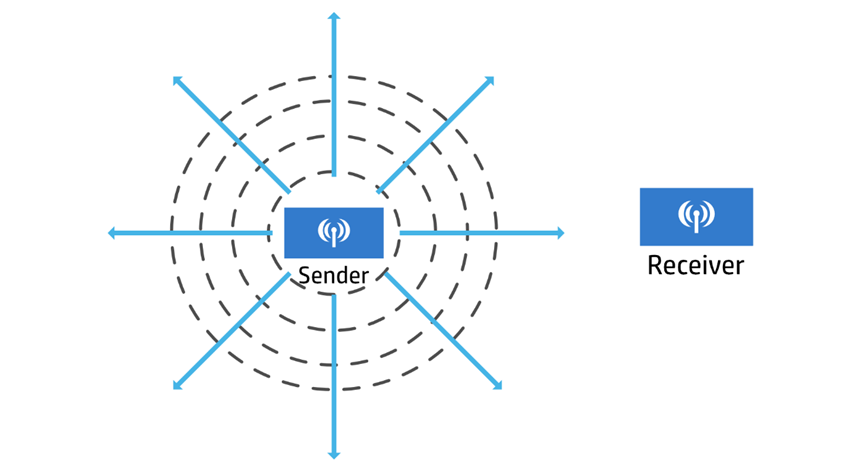Electric signals are used to send data across the other end of the wire for wired communication systems connections. The wire is conductive, and it allows the signals to propagate easily. Wireless communication technology, such as mobile phones and radio communication, transmits information over a distance without using wires, cables, or any electrical conductors.
Wireless communications comprise all methods and techniques of communicating and connecting two or more devices through wireless technology. So, how can wireless communication technologies work without using any physical wires to carry the electric signal?
Wireless Network Electromagnetic Waves
Wireless communication system transmission consists of a source or transmitter and a destination or receiver. The transmitter sends an alternating current into an antenna, which creates moving electric and magnetic fields that disperse as traveling waves out and away from the antenna.
As illustrated in the image below, the electric and magnetic fields move together and are perpendicular to one another. The electric signal must be continuously changing, or alternating, by cycling up and down to maintain the electric and magnetic fields cycling and constantly pushing outward.

The wireless networks’ electromagnetic waves do not flow in a straight path. They instead spread out in all directions away from the antenna. Electromagnetic waves extend outward in all three dimensions in the free space.
The image below shows a single-point antenna connected to the sender, and the electromagnetic waves emitted by the sender’s antenna spread in a spherical pattern. The waves will ultimately reach the receiver, as well as several other areas in different directions.

The sender propagates wireless signals. The wireless communication services between the two devices get established when the receiver captures these signals. As a result, a wireless communication bridge is formed between the sender and receiver devices.
The process is then reversed at the receiving side of wireless communication systems. When electromagnetic waves reach the receiver’s antenna, they generate an electrical signal. The received wireless signal will be a near copy of the originally transmitted signal.
The main difference between electromagnetic waves is their frequency. The higher the frequency, the more waves are in a specific time cycle. Higher frequencies provide higher data rates. Low-frequency electromagnetic waves have a longer wavelength, which is the distance between the peaks of the wave. On the other hand, high-frequency electromagnetic waves have a short wavelength.
Download our Free CCNA Study Guide PDF for complete notes on all the CCNA 200-301 exam topics in one book.
We recommend the Cisco CCNA Gold Bootcamp as your main CCNA training course. It’s the highest rated Cisco course online with an average rating of 4.8 from over 30,000 public reviews and is the gold standard in CCNA training:
